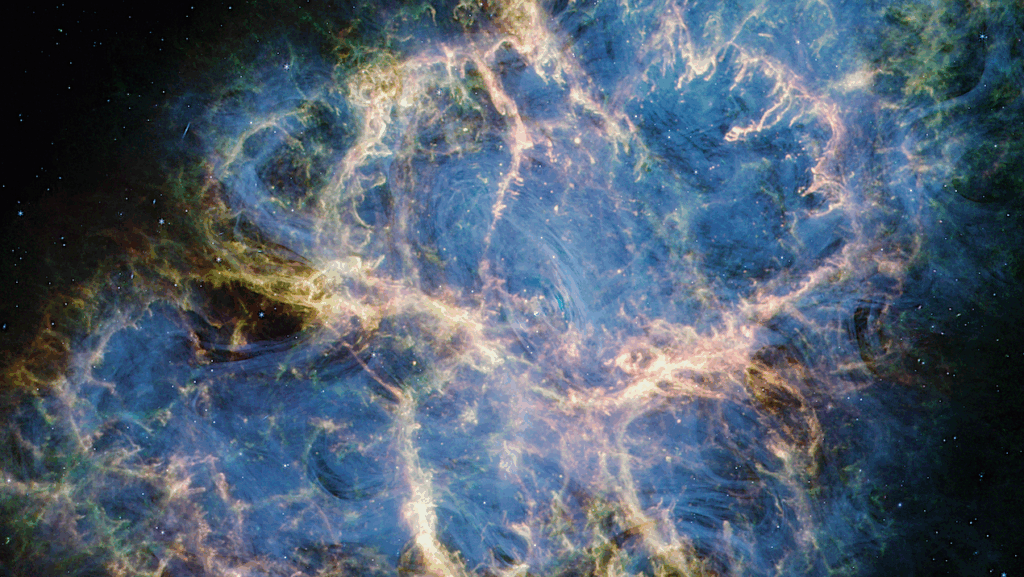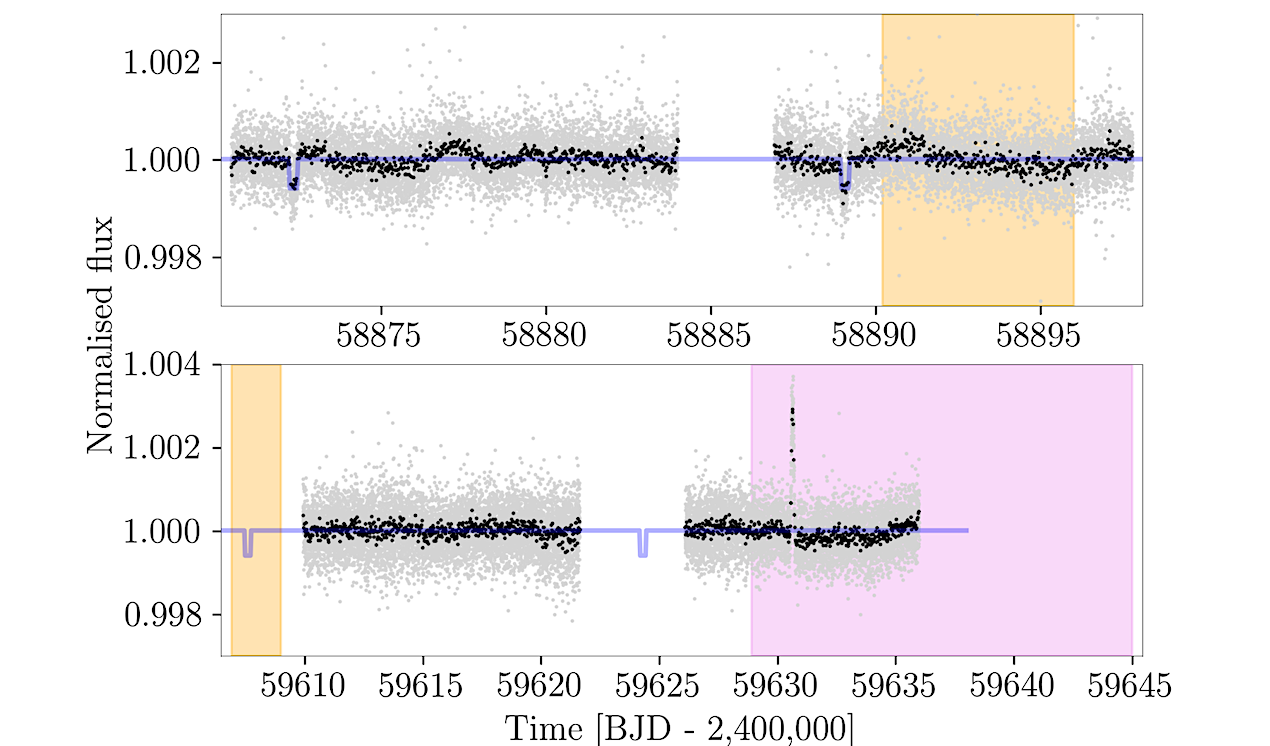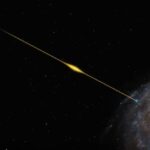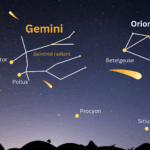Now Reading: CoronaGraph Instrument Reference stars for Exoplanets (CorGI-REx) I. Preliminary Vetting and Implications for the Roman Coronagraph and Habitable Worlds Observatory
-
01
CoronaGraph Instrument Reference stars for Exoplanets (CorGI-REx) I. Preliminary Vetting and Implications for the Roman Coronagraph and Habitable Worlds Observatory
CoronaGraph Instrument Reference stars for Exoplanets (CorGI-REx) I. Preliminary Vetting and Implications for the Roman Coronagraph and Habitable Worlds Observatory
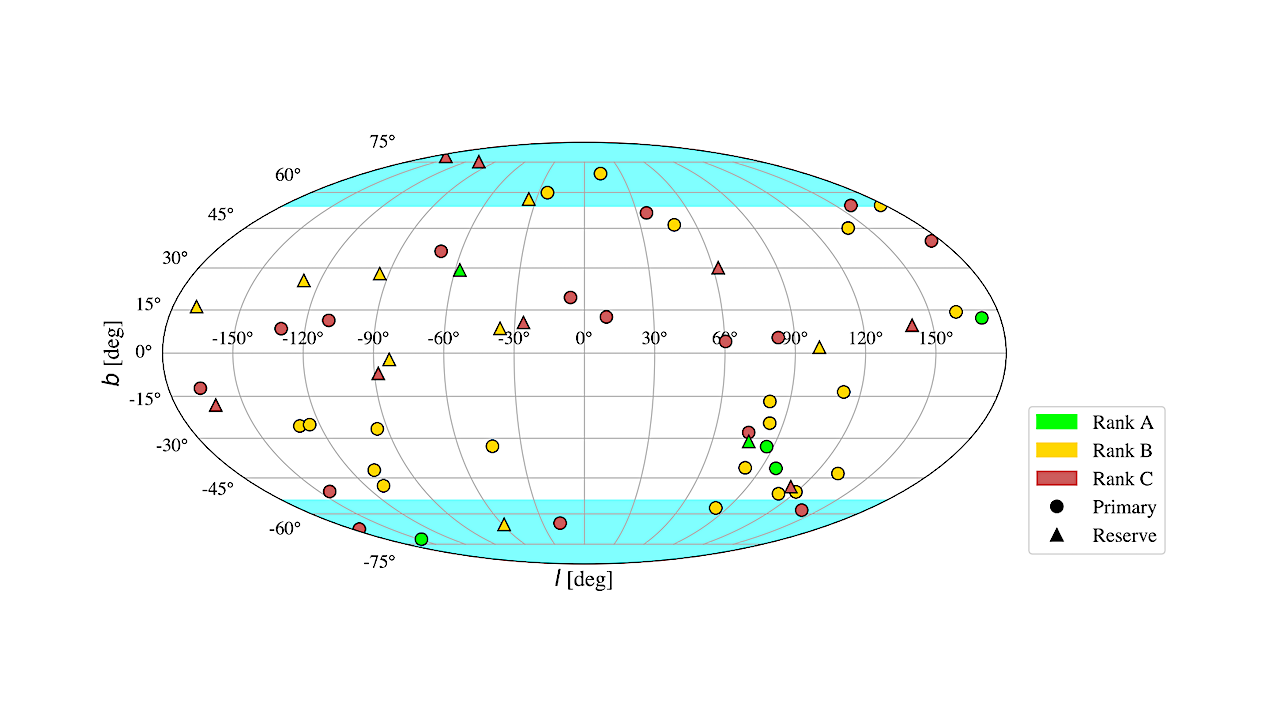
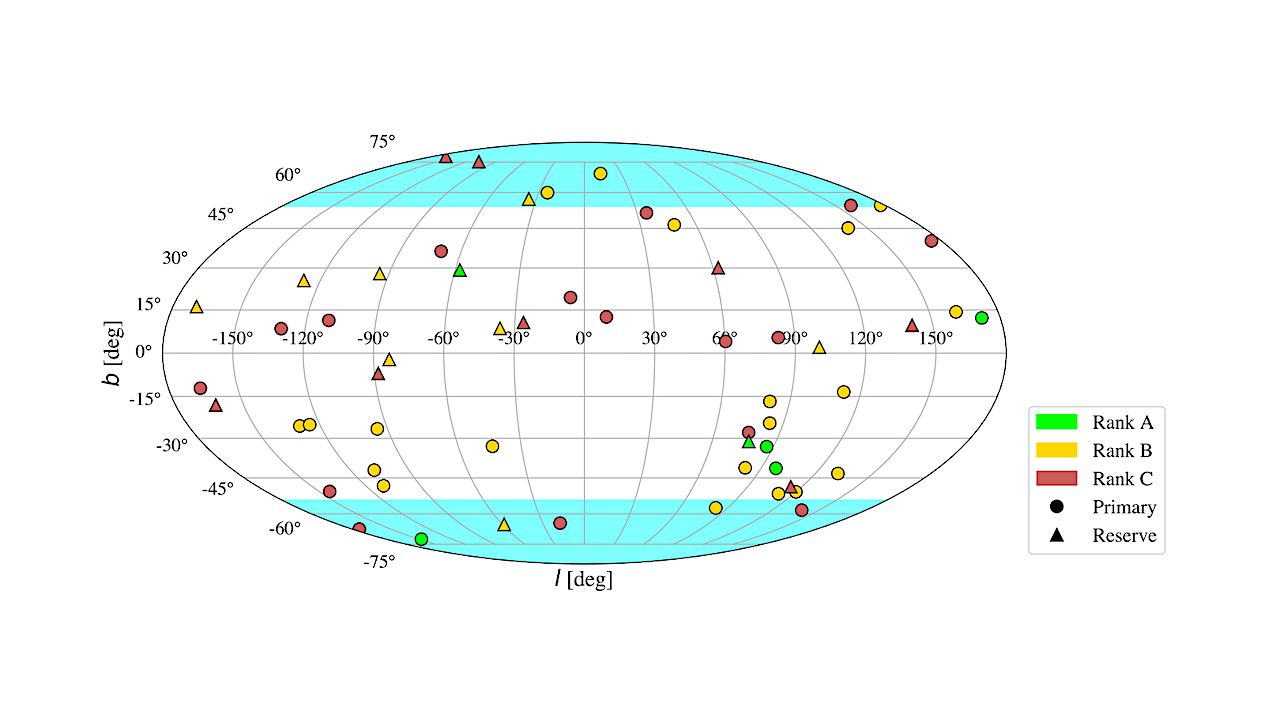
Primary (circles, ≤ 2 mas) and reserve (triangles, 5 mas) candidate reference stars plotted in ecliptic coordinates in epoch J2027 and equinox 2027 with colors indicating rankings. The CVZs are shaded in cyan. Only one rank A star is in any of the CVZs, and the overall number of rank A reference star candidates is very low compared to other ranks. If only Rank A stars are viable reference star candidates, science target scheduling for the Roman Coronagraph will likely be restrictive. — astro-ph.SR
The upcoming Roman Coronagraph will be the first high-contrast instrument in space capable of high-order wavefront sensing and control technologies, a critical technology demonstration for the proposed Habitable Worlds Observatory (HWO) that aims to directly image and characterize habitable exoEarths.
The nominal Roman Coronagraph observing plan involves alternating observations of a science target and a bright, nearby reference star. High contrast is achieved using wavefront sensing and control, also known as “digging a dark hole”, where performance depends on the properties of the reference star, requiring V<3, a resolved stellar diameter <2 mas, and no stellar multiplicity.
The imposed brightness and diameter criteria limit the sample of reference star candidates to high-mass main sequence and post-main sequence objects, where multiplicity rates are high. A future HWO coronagraph may have similarly restrictive criteria in reference star selection.
From an exhaustive literature review of 95 stars, we identify an initial list of 40 primary and 18 reserve reference star candidates relevant to both the Roman Coronagraph and HWO. We present results from an initial survey of these candidates with high-resolution adaptive optics imaging and speckle interferometry and identify no new companions.
We discuss the need for higher-contrast observations to sufficiently vet these reference star candidates prior to Roman Coronagraph observations along with the implications of reference star criteria on observation planning for Roman and HWO.
Justin Hom, Schuyler G. Wolff, Catherine A. Clark, David R. Ciardi, Sarah J. Deveny, Steve B. Howell, Alexandra Z. Greenbaum, Colin Littlefield, Ramya M. Anche, Vanessa P. Bailey, Wolfgang Brandner, Gaël Chauvin, Julien H. Girard, Brian Kern, Eric Mamajek, Bertrand Mennesson, Dmitry Savransky, Karl R. Stapelfeldt, Beth A. Biller, Marah Brinjikji, Masayuki Kuzuhara, Maxwell A. Millar-Blanchaer, Toshiyuki Mizuki, Nicholas T. Schragal, Macarena C. Vega-Pallauta, Jason J. Wang, Robert J. De Rosa, Ewan S. Douglas, Bruce Macintosh, Jingwen Zhang, the Roman Coronagraph Community Participation Program
Comments: Accepted for Publication in AJ, 27 pages, 8 figures, 6 tables
Subjects: Solar and Stellar Astrophysics (astro-ph.SR); Earth and Planetary Astrophysics (astro-ph.EP); Instrumentation and Methods for Astrophysics (astro-ph.IM)
Cite as: arXiv:2511.08862 [astro-ph.SR] (or arXiv:2511.08862v1 [astro-ph.SR] for this version)
https://doi.org/10.48550/arXiv.2511.08862
Focus to learn more
Submission history
From: Justin Hom
[v1] Wed, 12 Nov 2025 00:58:47 UTC (2,719 KB)
https://arxiv.org/abs/2511.08862
Astrobiology, exoplanet, astronomy,
Stay Informed With the Latest & Most Important News
-
 012024 in Review: Highlights from NASA in Silicon Valley
012024 in Review: Highlights from NASA in Silicon Valley -
 02Panasonic Leica Summilux DG 15mm f/1.7 ASPH review
02Panasonic Leica Summilux DG 15mm f/1.7 ASPH review -
 03How New NASA, India Earth Satellite NISAR Will See Earth
03How New NASA, India Earth Satellite NISAR Will See Earth -
 04And Thus Begins A New Year For Life On Earth
04And Thus Begins A New Year For Life On Earth -
 05Astronomy Activation Ambassadors: A New Era
05Astronomy Activation Ambassadors: A New Era -
 06From Polymerization-Enabled Folding and Assembly to Chemical Evolution: Key Processes for Emergence of Functional Polymers in the Origin of Life
06From Polymerization-Enabled Folding and Assembly to Chemical Evolution: Key Processes for Emergence of Functional Polymers in the Origin of Life -
07SpaceX launch surge helps set new global launch record in 2024














